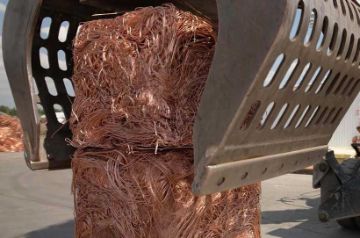- Markets
- Products
- Services
- Blog
- Tools & Resources
- About Nexans
- Search
- Contact us
- Compare
- Sign in
High-temperature superconductor cables (HTS)
Transforming urban power

Nexans is a global leader in high temperature superconductor* (HTS) technology for power grid applications. Our offer includes both HTS cables and HTS fault current limiters. Let’s take a look at these products in more details.
Transmission system operators (TSOs), distribution system operators (DSOs) and railway operators need a way to satisfy the ever-growing demand for energy in cities and transport networks. Nexans HTS cables are designed to meet that demand.
- Minimal land take – rights of way for HTS cables are up to ten times narrower than those for conventional cables and lines. Fewer cables are required and there is no need for space between phases. This reduces the need for permitting, minimises disruption to the public, accelerates deployment and contributes to lower costs.
- Energy savings – superconducting cables are ultra-efficient conductors with zero or near-zero resistance. The power saving achieved in this way is greater than the energy expended to maintain conductors at a low temperature. By contrast, conventional long-distance transmission systems using aluminium and copper conductors experience power losses of around 10%. This amounts to around 180 TWh annually in Europe alone – enough to power three cities.
- Zero heating – superconducting cables do not emit heat, no matter how much power they carry. This has three important benefits. First, it means that HTS cables can be direct-buried in the ground, accelerating project delivery and reducing costs, and deeper than conventional cables, as heat exhaust is not an issue. Second, the absence of heating effects means that there is no reduction in transmission capacity when other cables are run in proximity. Third, there is no soil drying effect – a key consideration if HTS cables are run alongside conventional cables.
- No need for tunnels – as noted above, HTS cables can be direct-buried. This means that tunnels and pipes for cables are not required – even in high capacity transmission projects. In cases where pipes or tunnels already exist, retrofitting HTS cables in place of conventional cables dramatically increases the transmission capacity of these assets.
- Minimal EMF – HTS cables are fully shielded to prevent the generation of stray electromagnetic fields, minimising effects on surrounding infrastructure and allaying public concerns about EMF.
World-leading innovation: our references include the LIPA 138kV AC cable project in Long Island USA, and the Ampacity 10kV AC link in Essen in Germany – the world’s longest superconducting cable, in use for seven years.
Our websites
Select your country to find our products and solutions
-
Africa
- Africa
- Ghana
- Ivory Coast
- Morocco
- North West Africa
- Americas
- Asia
- Europe
- Oceania







